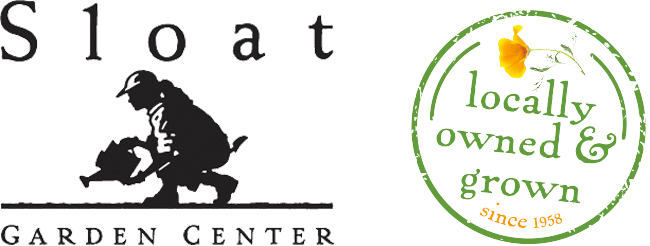For the squash lovers among us, it’s time to get planting. Summer squash is planted for warm weather harvest and picked when immature. Their skins are soft and they can be stored for 1 to 2 weeks. Pattypan, yellow crookneck, zucchini or Italian squash are good examples.
The other type is winter squash; it’s grown for harvest in late summer or fall. The fruits have hard rinds and are harvested when mature. Winter squash will store well in a cool, dry location for 1 to 6 months. Good examples are acorn, butternut, buttercup, delicata and hubbard varieties. Pumpkins are squash, too, and spaghetti squash looks like any other winter squash but after cooking the nutty tasting flesh is made up of long, spaghetti like strands. Yum!
Planting & Growing
Squashes are large, vining plants that will continue to bear fruit for weeks after initial harvest. Because vines are so large they need ample growing space, but a container (such as a wine barrel) can work, too. Smaller fruiting varieties can be trained on a trellis. Train vines to go in the direction you want them to go. Move them in the direction you want them to grow a little each day. Bury vines with an inch or two of soil to encourage secondary root growth. Winter squash need more growing space than summer squash and both perform best in full sun and planted in fertile, well-drained soils containing high levels of organic matter. Plant squash in hills and sow 4 to 5 seeds per hill at a depth of 1 inch. Hills and rows of should be 3 to 4 feet apart. Hills of winter squash should be spaced 4 to 5 feet apart with 5 to 7 feet between rows.
Roots need regular moisture, but leaves and stems should be kept as dry as possible to prevent leaf and fruit diseases.
Pests
Squash bugs cause leaves to wilt and may damage fruit. To control squash bugs, destroy yellowish to brown egg clusters on undersides of leaves, trap adults with boards or burlap set in the garden at night, then collect and destroy your catch each morning.
Powdery mildew: when it’s hot and humid squash are susceptible to powdery mildew. Treat with copper spray at the first sign of problems.
All about squash pollination (by UC DAVIS)
http://vric.ucdavis.edu/pdf/fruitsetproblems.pdf
Squash, melons, and cucumbers belong to the same family, often called “cucurbits,” and have a flowering habit which is unique among the vegetable crops. They bear two kinds of flowers, male and female, both on the same plant. In order for fruit set to occur, pollen from the male flower must be transferred to the female flower. The pollen is sticky; therefore, wind-blown pollination does not occur. Honeybees are the principal means by which pollen is transferred from the male to the female flower. Other insects cannot be depended upon for pollination. Farmers who grow these crops place hives of bees in their fields to insure that pollination takes place. Wild honeybees are rare in some urban neighborhoods, and when bees are absent, fruit set on garden plants in the cucurbit family is very poor and often nonexistent. If only a few bees are present in the area, partial pollination may occur, resulting in misshapen fruit and low yield.
When no bees are present in the garden or the bee population is too low for good fruit set, the dedicated gardener can substitute for the bee by pollinating by hand. Hand pollination is a tedious chore, but it is the only means of obtaining fruit set in the absence of bees. The pollen is yellow in color and produced on the structure in the center of the male flower. You can use a small artist’s paintbrush to transfer pollen, or you can break off a male flower, remove its petals to expose the pollen-bearing structure, and roll the pollen onto the stigma in the center of the female flower. When hand pollinating, it is important to use only freshly opened flowers. Flowers open early in the morning and are receptive for only one day.
The female flower in cucurbits can be recognized easily by the presence of a miniature fruit (ovary) at the base of the flower. Female squash flowers are much larger than the female flowers on melon and cucumber plants. The male squash flower can be identified by its long, slender stem. The female squash flower is borne on a very short stem.
In melons and cucumbers, male flowers have very short stems and are borne in clusters of three to five, while the females are borne singly on somewhat longer stems.
Gardeners often become concerned when many flowers appear early but fruits fail to set. The reason for this is that all of the early flowers are males. Female flowers develop somewhat later and can be identified by the miniature fruit at the flower base. In hybrid varieties of summer squash, however, the first flowers to appear are usually females and these will fail to develop unless there are male squash flowers – and bees – in the nearby area.
A common misconception is that squash, melons, and cucumbers will cross-pollinate. This is not true; the female flowers of each can be fertilized only by pollen from that same species. Varieties within each species, however, will cross-pollinate. Thus, zucchini squash will cross with crookneck or acorn squash, and similarly among varieties of cucumber, and among varieties of muskmelon. When more than one variety of a particular cucurbit is grown in the garden, they will readily cross, and seed saved from these plants will produce fruit which will be different from either of the parents

